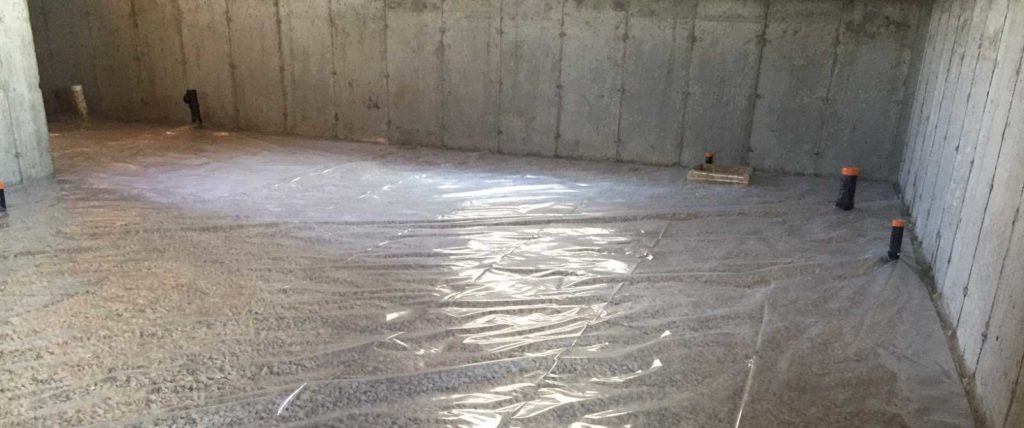Gravel On Vapor Barrier Leads To Crawl Space Mold in Springfield Missouri
A vapor barrier is a necessity for your crawl space when living in the Ozarks. Mold, wood rot, odors, and insects are just a few things that will haunt your crawl space without one.
The amount of moisture that comes up from the ground can be detrimental to the underside of your home and your breathing space inside the home. At least a third of the air inside your home comes up from your crawl space.
While a vapor barrier is needed to protect your crawl space, if you don’t install it properly, it can cause more harm than good to your home. One of those incorrect ways is by putting a vapor barrier down, then pouring gravel on top of that vapor barrier during the building process.
Gravel is great for dispersing water, but when it disperses that water on top of a vapor barrier, that water pools up underneath and can’t be dried up properly.
No builders install vapor barriers purposely wrong. The combination of a vapor barrier and gravel covering your crawl space sounds like a good idea. But it’s very important in which order you install them.
You need to put the gravel down first and then put the vapor barrier on top to keep your crawl space dry and free from crawl space mold. When a vapor barrier is incorrectly installed underneath the gravel, any water that does get in can’t get out.
Imagine a plumbing problem that leaks water down on top of your crawl space floor. That water would get on a properly installed vapor barrier, because it can’t be avoided if there’s a plumbing leak from up above.
When the vapor barrier is correctly installed on top of the gravel, any water that does get on it can easily be dried up, because it’s sitting on top of the vapor barrier in one area.
If that water spreads out, it will naturally dry up on it’s own. Or if it pools up in one area, a small hole can be made to drain that water and then that hole can be patched up.
But if you incorrectly have gravel poured on top of your vapor barrier, that water will get dispersed by the gravel and pool up underneath the gravel on top of the covered vapor barrier where you can’t dry it up. That traps the moisture inside your crawl space, leaving it susceptible to crawl space mold and other harmful things.
The moral of the story is that you need to have a vapor barrier in your crawl space, but you need a properly installed vapor barrier. Too much moisture comes up from the ground every day to not cover the ground and protect the floor joists and sub-flooring of your home from mold and rot.
Proper installation means all the seams are properly overlapped and sealed, the entirety of the ground is covered whenever possible, and the vapor barrier is going up 6-12 inches over the pier bases and the footer.
When gaps are left open, or seams aren’t overlapped properly or sealed, or the thickness of the vapor barrier isn’t proper for crawl space use, or if gravel is put on top of your vapor barrier, then you are leaving your crawl space susceptible to moisture issues, which will inevitably lead to crawl space mold.
Don’t let this happen to your home. If you have a vapor barrier that’s been installed incorrectly or if you don’t have one at all, call the experts at Dog Gone Mold to assess. Whether you have Dog Gone Mold install a proper vapor barrier in your crawl space, or have Dog Gone Mold perform a crawl space encapsulation in your home, you can rest assured you won’t have to worry about these issues again.
